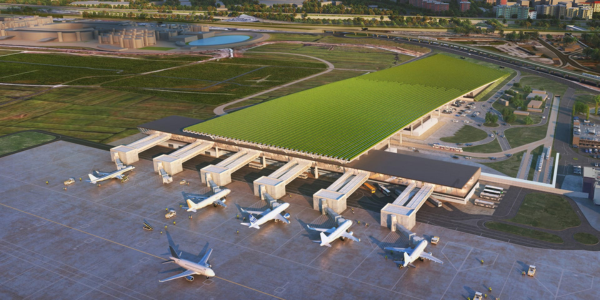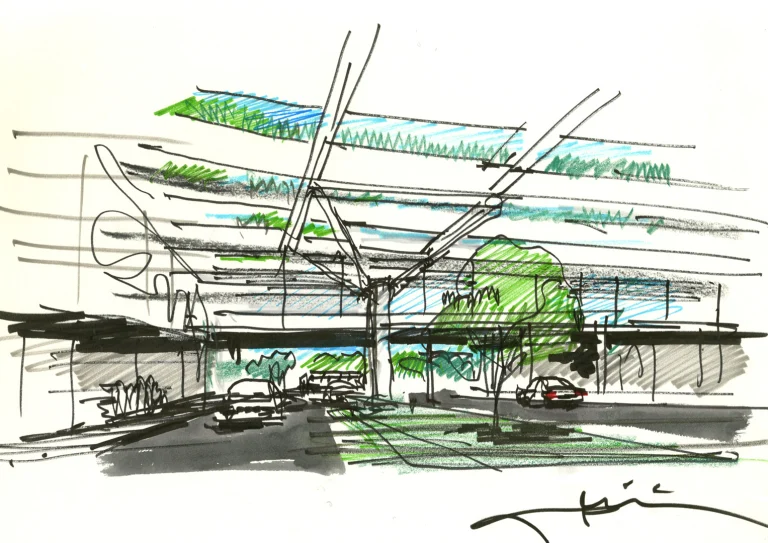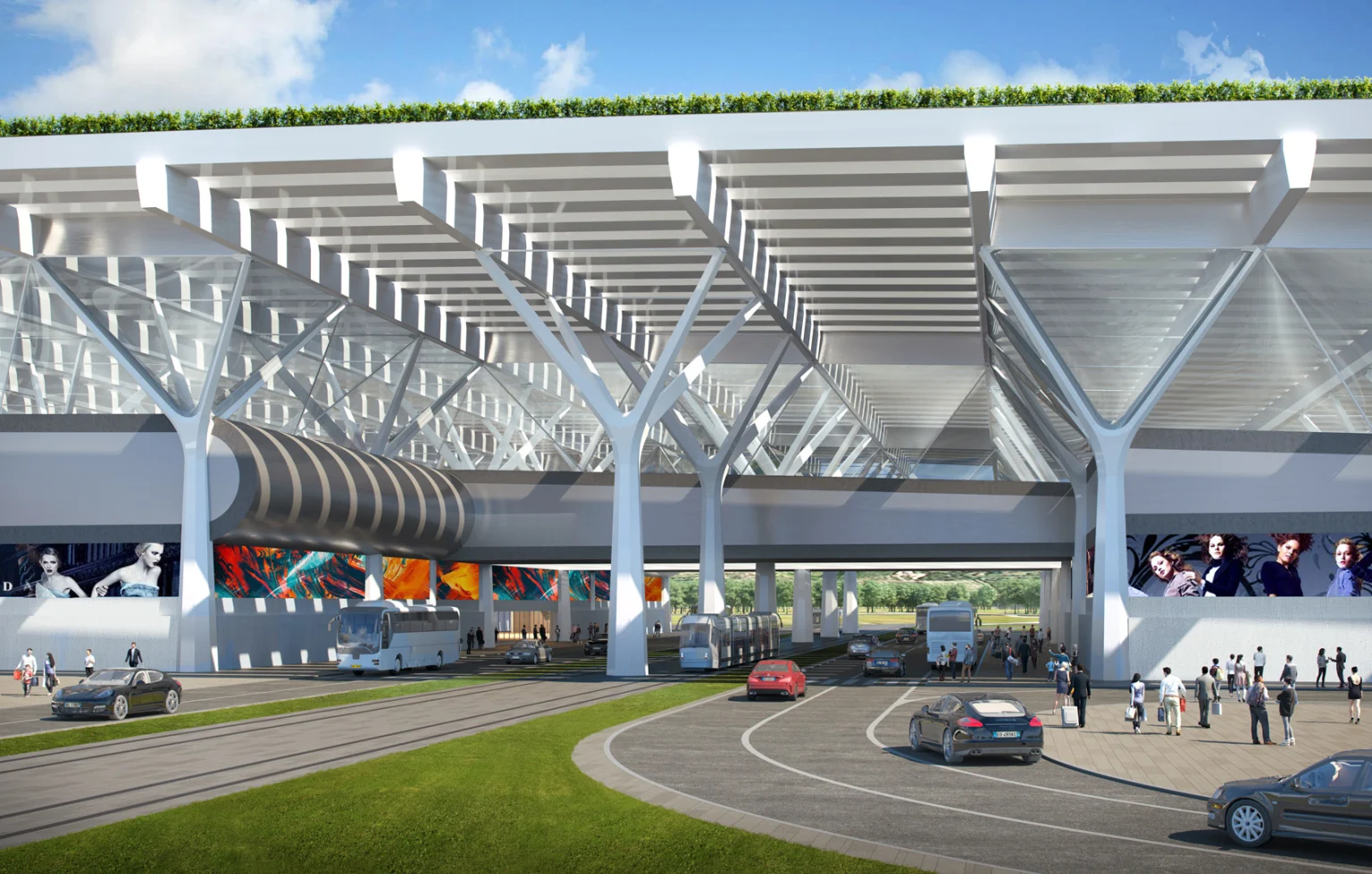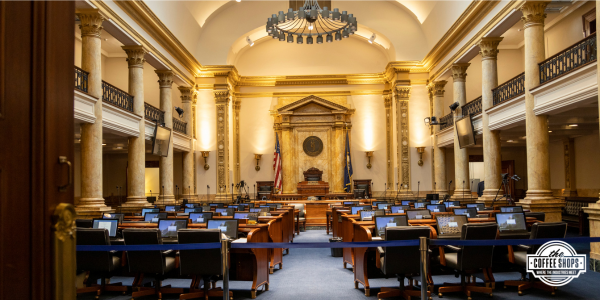Travelers will raise a glass to this new airport roof

By Hannah Ford.
This airport terminal project in Florence, Italy proves eco-roofs are not only beautiful to look at, but the future of agriculture and sustainability science.
In the heart of Tuscany, Italy, where culture and wine thrives, there are plans for a new airport terminal. What makes this terminal interesting is its unique roof that will house a nineteen-acre vineyard. The Amerigo Vespucci Airport in Florence, also known as the Peretola Airport, is being constructed by the U.S.-based design studio, Rafael Viñoly Architects. This new skylit terminal will handle over 5.9 million international passengers every year and hold thirty-eight rows of Italian grapes.
The designer of the new terminal, Rafael Viñoly, began his work in 2014 and continued to work on the project until his passing in 2023. His son, Román Viñoly, is now leading the project. “My father was intensely motivated by contributing something to the city that gave the world Brunelleschi and Michelangelo, among many others,” Román told Fast Company. “This was something that made him really strive to produce a work that would become a landmark in the city.” The project is a symbol of the Tuscan region as it blends in with the countless vineyards that sprawl across the countryside. Florence’s newest terminal roof exudes technical creativity and will be visible from several famous landmarks.
Rafael Viñoly Architects, the firm hired by the Tuscan airport, focuses on a wide variety of projects. They design cultural, healthcare, research, residential and transportation buildings. Founded in 1983, the company is based in New York City and has received several awards for their inspiring design. According to the firm, they believe that “all buildings are ultimately civic projects because they are so capital intensive, unignorable and enduring, that they inevitably impact the lives of every person in their community.”

It is expected that the first phase of the project will be completed in 2026, and the second phase completed in 2035. At the end of the first phase, specialized cellars for the wine will be constructed beneath the terminal’s roof. An expert local vintner will be set up to oversee the on-site wine production crafted from the roof’s grapes. Non-fruit bearing plants will be planted on the western region of the roof, closest to the planes, to protect the plants from pollution.
This roof isn’t only going to be aesthetically pleasing. One of the main focuses of this project is to find ways to increase sustainability in non-traditional ways. The rooftop vineyard will help to insulate the building and provide natural temperature control. A thick layer of soil will keep warmth in during the winter and evaporative cooling from plant beds will reduce heat in the summer. The vast skylights will eliminate the need for artificial lighting and electricity for the terminal will be sourced from photovoltaics, also known as solar panels. “Sustainability should be a major design consideration of anybody setting pencil to paper to design any building,” Román said to Fast Company. “That’s how we approach architectural design, from the perspective that it is a moral responsibility of the architect to consider every sustainable strategy in the execution of a design and then in the construction of a building.”
Not only is the Amerigo Vespucci Airport aiming to increase sustainability with the vineyard roof but also connect the airport terminal to a fast, convenient and sustainable light rail system to Florence. Since the project's announcement, discussion of the carbon offset's effectiveness has begun. The new terminal project is aiming to inspire other airports globally to adopt similar practices in promoting sustainability.

With a large-scale roofing project like this, it is necessary to consider the type of impact it will have on the surrounding community. While the roof improves the sustainability of the airport, it is also creating a precedent for more environmental considerations in workspaces by providing a solution to limited space available in urban areas. If future developers can take this example and follow the intentions of the vineyard roof project, then agriculture will not have to compete as much with real-estate markets in such a prevalent fashion. Production of fresh and perishable foods, like vegetables, has high transportation costs into urban areas from rural farms, but if produce is readily available in high traffic areas like Florence, this can increase the freshness of foods and decrease waste and cost.
This innovative and revolutionary vineyard installation on top of the Amerigo Vespucci Airport terminal in Italy is a seamless blend of appreciation for the local culture and care for the environment. With its large windows and luscious greenery, it is sure to become a welcome and iconic sight. The Rafael Viñoly Architects are changing the way we perceive sustainable infrastructure by setting a new standard for the creation of environmentally conscious buildings. Hopefully, Rafael’s contribution to this vineyard roof will become a work of art that stands the test of time just as well as a Botticelli and be a bright beacon welcoming all those who explore the picturesque region of Tuscany.
Image source: Rafael Viñoly Architects
Stay up to date with the latest industry news when you sign up for the Coffee Shop eNews.

About Hannah
Hannah Ford is a content intern for the Coffee Shops. She is a student at Oregon State University pursuing her bachelor of science in marketing. In her free time she enjoys reading, art, music and trying new restaurants.






















Comments
Leave a Reply
Have an account? Login to leave a comment!
Sign In